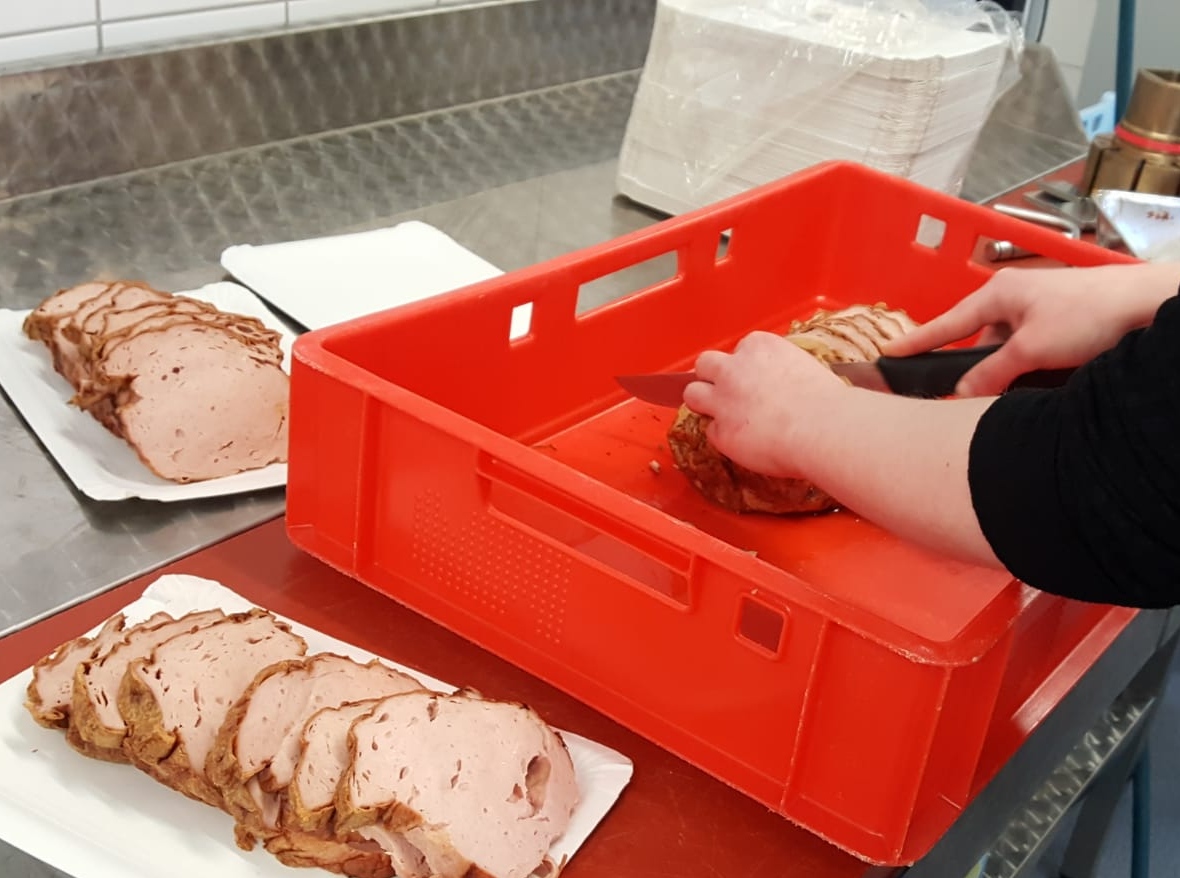Jetzt im sechsten Semester haben wir ein Praktikum in der Lebensmitteltechnologie. Am letzten Praktikumstag war die Brühwurstherstellung dran. Dabei haben wir ein Grundbrät hergestellt, welches wir mit verschiedenen Einlagen: Käse, Champignons und Paprika versetzt haben.
Für mich jetzt nicht viel neues, da ich ja durch meine Ausbildung weiß, wie man Brühwurst herstellt und auch selbst kuttern kann. Meine Kommilitonen haben jedoch zum größten Teil keine Ahnung, wie Brühwurst hergestellt wird. Ist schon was anderes, wenn man live sieht wie die Herstellung funktioniert statt ausschließlich Folien auswendig zulernen.
Die Erklärungen zum Herstellungsprozess waren hochinteressant. So ausführlich und in dieser Tiefe wurde mir die Brühwurstherstellung und worauf Brühwurstfehler zurückzuführen sind weder in der Berufsschule noch im Ausbildungsbetrieb erklärt.
Im Zuge des Herstellungsprozesses haben wir uns mit Folgenden Fragestellungen befasst:
- Wieso wird das Magerfleisch vor dem Kuttern gewolft?
- Was ist bei Bindungsproblemen zu tun?
- Welche Tricks gibt es, damit sich die Einlagen optimal mit dem Brät verbinden?
- Wieso wird Brühwurst im Idealfall bis maximal 12°C gekuttert?
- Welche Vorteile haben Kutter?
- Was ist das Halbfertigprodukt in der Brühwurstherstellung?
- Welche Logik hat die Produktionsplanung?
- Wie ist der Produktionsablauf zu bewerten?
- Wie ist der Produktionsprozess zu bewerten?
- Wie wird Brühwurst schnittfest?
- Was ist die Hauptursache für Fettabsatz bei der Brühwurst?
- Wie können Lufteinschlüsse vermieden werden?
- …
Und könnt ihr alle Fragen beantworten?
Die Entscheidung die Ausbildung mit dem Studium zu vertiefen, lohnt sich auf jeden Fall.
Ich bin gespannt, wie die Technologie von Koch- und Rohwurst im Studium erklärt wird. Ich bin mir sicher, dass ich lerne, warum di Prozesse so ablaufen, wie sie ablaufen.
Food technology practical course
We are having a practical course in food technology in sixth semester now. We produced boiled sausage at our last practical day. Therefore, we made a basic sausage meat and added several ingredients: cheese, mushrooms and bell peppers.
It´s not that much new for me because I know how to produce sausage meat due to my apprenticeship. But most of my fellow students have never seen how boiled sausage is made. And it´s for sure something different if you have seen it, then only learning the script by heart.
The explanations of the production process was really interesting. I never got an explanation that deep at butcher school or at the company I am serving my apprenticeship.
We spoke about the following questions during the production process:
- Why do we use ground lean meat for the production process?
- What should we do if our ingredients (cheese, mushrooms, bell peppers) do not stick to the sausage meat?
- Which tricks are there to achieve that our ingredients stick to the sausage meat?
- Why is the limit temperature for our production process in the bowl cutter 12°C?
- Which advantages do bowl cutters have?
- What is our semi-finished product in the production process of boiled sausage?
- Which logic does our production plan follow?
- How do we evaluate the production process?
- Why is boiled sausage firm?
- What is the main reason for fat to separate from the sausage meat?
- How can air holes be prevented?
- …
Can you answer all questions?
My decision to expand my knowhow through studies was the right one. I am curious how the production of cooked and raw sausages will be explained in my food management studies. I am sure, that I am going to learn why a process is done like it is done.

